Review of Frankenstein
Introduction
As part of the pre-release hype of this year`s "Van Helsing" movie, Universal are releasing twin packs of their classic Universal Monster collection. "Frankenstein" and "Bride Of Frankenstein" are the same releases brought out last year individually (although I believe a misframing issue on "Bride" may have been addressed - it has been on the R1 edition). "Dracula" (1931) has been packed with "House of Dracula"; "The Wolf Man" with "Werewolf Of London". Unfortunately, the US has been served much better and virtually the entire Universal Monster collection is available in either individual Monster Legacy issues or an incredible six-disc gift set which includes miniature busts of the Monster, Dracula and the Wolf Man.
Although the same year`s "Dracula" starring Bela Lugosi had started the Golden Age of the Universal Monsters, "Frankenstein" consolidated the franchise, provided the definitive image of the Monster and launched a million nightmares. It was, and is, one of the greatest horror films ever made.
Carl Laemmle Jr., the head of Universal, had been so pleased with the success of "Dracula" that he immediately set the studio to the production of Mary Wollstonecraft Shelley`s classic chiller "Frankenstein, or, the Modern Prometheus". The story had been told previously on screen, most notably in Edison`s silent short of 1910. Laemmle`s new version would be the story writ large. To coin in on the success of "Dracula", Laemmle wanted Lugosi to take the part of the Monster. Lugosi, who didn`t particularly want to be synonymous with horror, turned down the offer (although he would eventually don the makeup for "Ghost of Frankenstein"). Not however before shooting a two-reel test under the direction of experimental French filmmaker Robert Florey. Stomping around the sets of Castle Dracula, Lugosi`s makeup was based on the title monster of the German impressionist masterpiece "The Golem" (1914). The results were disappointing, and both Lugosi and Florey took the opportunity to bail out.
The project went into what is now known as "development hell", but only for a matter of weeks before English stage-trained director James Whale, who had very successufully directed "Waterloo Bridge" (1931) was offered a list of projects to choose from. On a pixie whim, he chose "Frankenstein" as his next project. He joined the project with one certainty - he knew the actor he wanted to play the tortured maker of the Monster, and it wasn`t Leslie Howard, the Studio`s preference. Whale cast angular fellow Englishman Colin Clive as Henry Frankenstein.
The Monster took more thought. Whale had spotted a young actor in the Studio commissary, and being something of a characaturist he had sketched the young man, emphasising certain features to arrive at his image of the Monster. The young man was a fellow Englishman who had started out in life as William Henry Pratt. He had chosen the stage name Boris Karloff, and after "Frankenstein" and a host of equally chilling parts he would often be billed simply as "Karloff".
Whale`s basic concept of the look of the Monster was translated into makeup by Jack Pierce. Coloured a lurid shade of green so as to photograph corpse-grey on black and white film the confection of collodion glue and cotton wool took hours to apply. Heavy wax eyelids drooped down over Karloff`s own and he removed his dentures to emphasise the hollow-cheeked look. A heavy, ill-fitting suit, leg braces to stiffen his legs into the Monster`s unsteady gait and asphalt-spreaders` boots added up to an image that would have 1930s audiences gasping in fright. After an unsuccessful visit to the studio commissary with a towel over his head, Karloff elected to eat alone in his dressing room.
It would be a very uncomfortable summer for Karloff. The shoot was almost entirely studio-bound under hot lights, and the costume weighed forty-eight pounds. Karloff wasn`t particularly heftily built and injuring his back carrying Colin Clive at one point contributed to the air of suffering that elevated his character beyond simple monster.
The film opens with an introduction by Edward Van Sloan, who plays Dr Waldman in the movie and who had played Dr Van Helsing in "Dracula". It`s an amusing little piece of hype that has inspired film marketeers for generations with warnings about film content. It leads into the archetypal gothic horror film, complete with bodysnatching hunchbacks, mad scientists and howling mobs with torches. Consider watching Mel Brooks` spoof "Young Frankenstein" (1974) after this and you`ll realise what a spot-on, and affectionate spoof of this film it is.
The creation of the Monster, in a wrecked tower full of magnificent electrical contraptions by Kenneth Strickfaden, is one of the great moments of the movies, not least with the often-quoted "It`s Alive, It`s Aliiiive!". It`s only now the movie is presented with Frankenstein`s era-shocking line "Now I know what it feels like to BE God!" just before the fadeout. The line was obscured by a thunderclap, or simply cut (causing a jump-cut) shortly after the premiere lest there be complaints.
There were complaints about the death of Little Maria, the girl accidentally drowned by the Monster on his first day out. Karloff objected to the scene as it turned the Monster from innocent abroad into a Monster. Whale pointed out it was the tragedy of the Monster`s innocence and Karloff shot the scene, tossing the little girl into the lake where she had been floating flowers to see if she would float.
She doesn`t.
Seven-year-old Marilyn Harris, who played Little Maria was an excellent swimmer and tried valiantly to "drown" convincingly to director James Whale`s liking. Whale offered to give her anything she wanted as a treat if she made one more attempt and her price was a dozen hard-boiled eggs. She nailed the scene and Whale got her two dozen. Obviously back in those days cholesterol and constipation were not a consideration.
After a preview, the scene was trimmed radically but the result made the later scene of her father carrying her dishevelled corpse into the village worse for inference of what the Monster had done to her. The scenes were only restored to US prints in the last few years. Oddly enough, British censors were more bothered about the scene where the Monster invades the boudoir of Henry`s bride-to-be and menaces her.
The climactic chase through the countryside to the wrecked mill was entirely shot on a soundstage at Universal Studios. Like that other great monster of the silver screen "King Kong" (1933) our sympathies are with the Monster, not his tormentors, by the end of the picture. Hounded by a howling mob carrying pitchforks and torches, the Monster is a victim of circumstance and ignorance, not a creature of evil. That`s what sets him apart from the Monsters who have come after him, not least the modern fashion for stalk-and-slashers whose only raison d`etre seems to be for polishing off dopey teenagers.
Boris Karloff created a role he would remembered for long after his death. He would only play the Monster three times (Frankenstein, Bride of Frankenstein and Son of Frankenstein) before handing his asphalt-spreaders` on to Lon Chaney Jr and Bela Lugosi among others but he`ll always be remembered for the Monster although he was the original and best Mummy and played more mad scientists than you can shake a bunsen burner at.
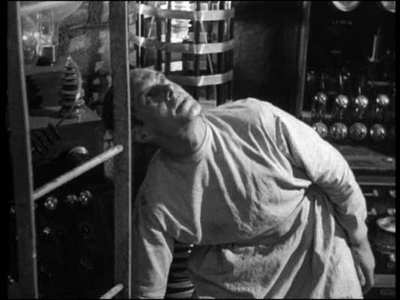
Video
Frankenstein was made back in the days when the Academy Frame was the only aspect ratio. It comes in the original 1.33:1 and black and white so you should accept no substitutes. Universal has done an excellent job of restoring the movie, although you shouldn`t expect too much. There are still scratches, negative and positive dirt and wear and tear but considering the film is seventy-three years old, it is in dazzling nick.

Audio
With all the will in the world, there is little you can do to improve the quality of a 1930s Western Electric soundtrack. Recording technology of the era, while miraculous for its day, bears no resemblance to the capabilities of modern audio reproduction. It`s like comparing a 78rpm shellac disc with a CD. Soundtracks of this era are by their very nature fuzzy, crackly and limited in the audio frequencies they can reproduce.
Soundtracks came in two forms this early in the history of cinema. One type (and "Frankenstein" is one), had a shellac disc that matched each reel of the movie. The projector had a turntable attached and the projectionist had to synchronise the disc with the film so that the movie would work properly. Synchronisation was difficult to achieve, and could be lost completely if the film broke or had been repaired. Curiously, the concept was revived with DTS, but instead of a shellac disc, the soundtrack is carried on a CD and synchronisation is achieved by carrying a timecode track on the film itself. Such technology was never available in the 1930s, and the system was soon superceded by the optical-track standard where the soundtrack was carried in a thin strip between the sprockets and the picture frame. This standard survives today.
Thanks to a set of soundtrack discs being found, the soundtrack has been restored to a certain extent, filtering out much of the recording system artefacts (snap, crackle and pop) but without affecting the soundtrack. The soundtrack is reproduced here in Dolby Digital 2.0 Mono.

Features
This disc comes with some fantastic extras. "The Frankenstein Files" is a wonderful making-of piece that lasts 45 minutes, and bears repeated viewing. There is a feature-length commentary by movie historian Rudy Behlmer. "The Frankenstein Archives" is a ten minute photo and artwork gallery with audio from the movie. "Boo" is a comic short subject of the Pete Smith variety cadging chunks of "Nosferatu". There is also a theatrical trailer. Everything is fully subtitled.
Frequent mention is made of Bill Condon`s "Gods and Monsters", the Academy-Award winning biopic of James Whale starring Sir Ian McKellen; you might consider having a look at this picture as well as the sequels and other Universal Horrors.
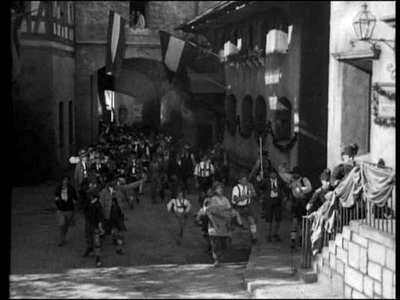
Conclusion
The success of the final version of "Frankenstein" established Boris Karloff as Universal`s new star, began a fourteen-year franchise that became known as the Golden Age of Hollywood Horror and provided the world with definitive versions of the great Monsters (Dracula, Frankenstein, The Wolf Man and The Mummy) that have yet to be outdone. Four years after the release of "Frankenstein", Universal released "Bride of Frankenstein", the sequel awaited with as much excitement in 1935 as a new Star Wars picture now. Critics often rate "Bride" higher than "Frankenstein", but this is the picture that sets the standard.
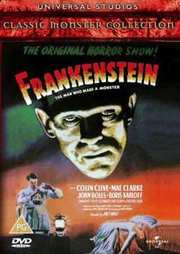

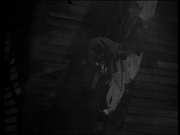
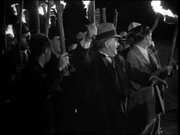

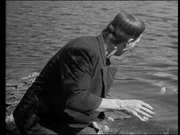
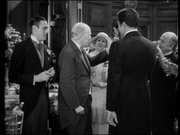
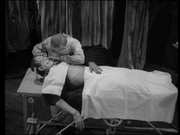
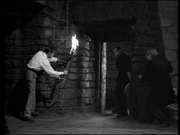
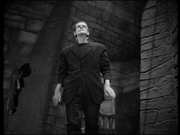
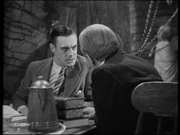
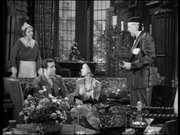
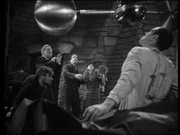
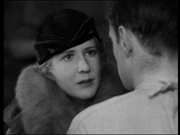
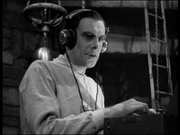
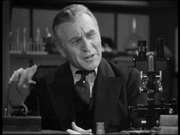
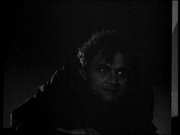

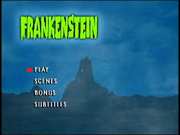
































Your Opinions and Comments
Be the first to post a comment!